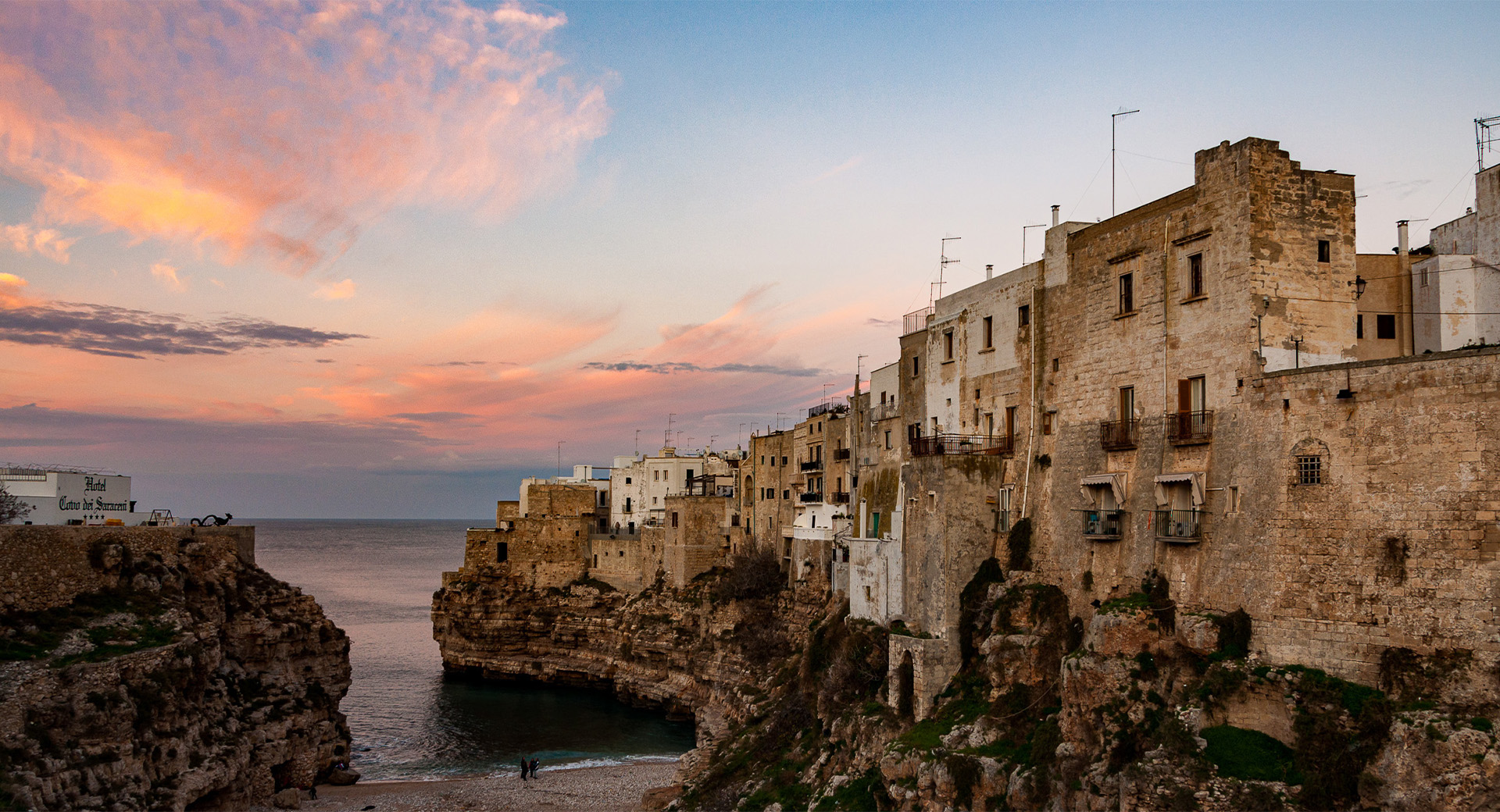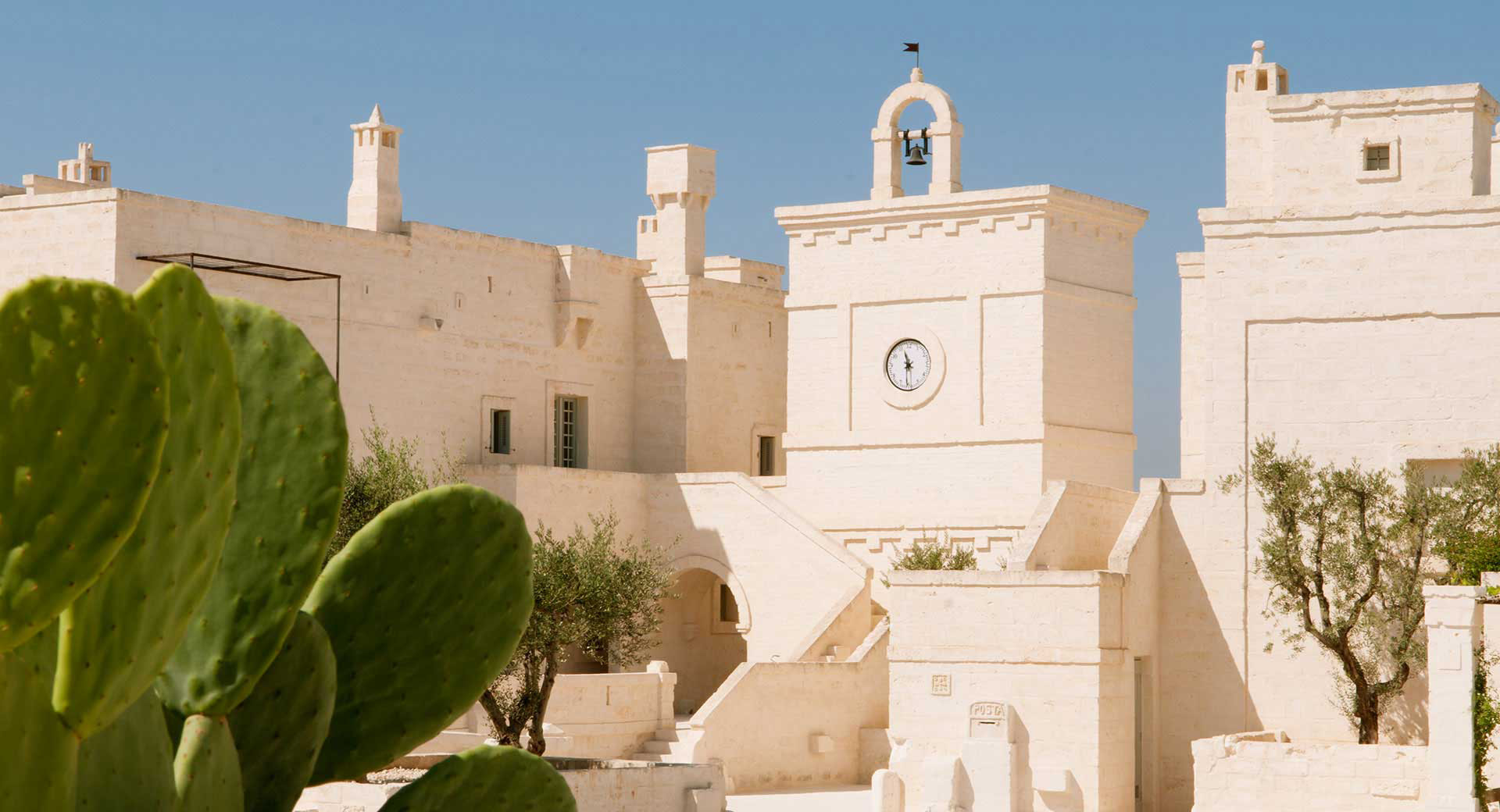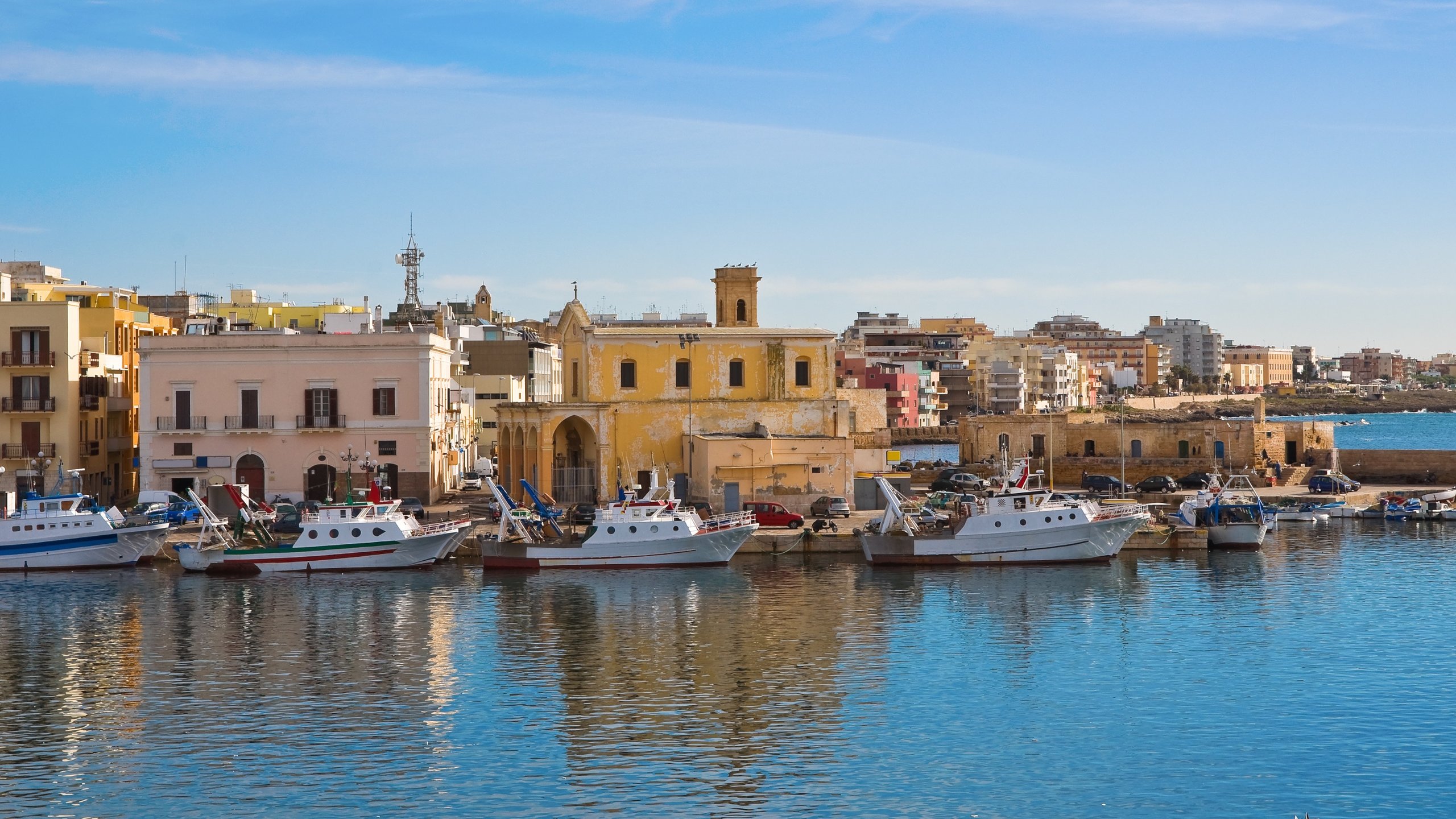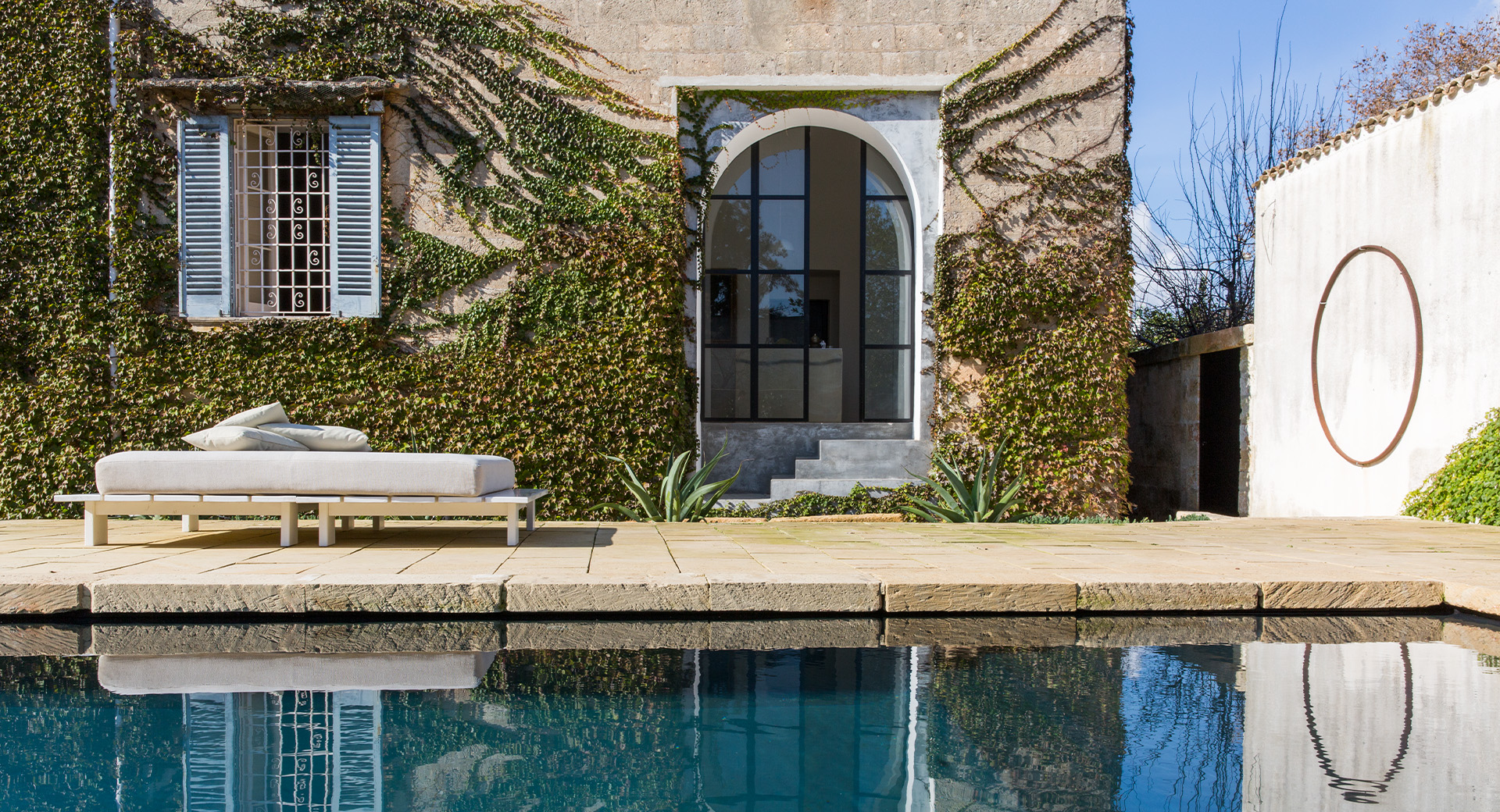- About
-
Discover
City Guides, Tour Guides, Insider's Guides
-
Experience
Book your next trip
-
Lab
Book the digital Experiences
-
Hidden Gems
Hotels. Restaurants, Bars

Editor: Elisa Carassai
Curator: MyApulianWay
Natural reserves, rocky and sandy beaches, medieval towns and of course, the best food you could ask for: Welcome to Puglia!
Are you ready to be welcomed by a profusion of medieval hilltop towns, olive groves, a coastline peppered with interesting towns, restaurant menus stuffed with local speciality dishes, two national parks, vineyards and enough castelli, cattedrali and palazzi to keep even the most demanding of history buffs content? Follow us on a tour stretching from Bari to the southernmost point of the heeled boot, at Santa Maria di Leuca.
Our tour starts in Bari, where you’ll be renting the car that will be accompanying you for the rest of the trip.
In Bari, take a walk that starts from the Norman-Swabian Castle and passes through the Arco Basso, you’ll come across the "via delle orecchiette" where the old ladies who live there every day prepare fresh pasta displayed on stalls along the cobbled streets. Before leaving Bari, you must try the focaccia barese at Panificio Fiore and Panificio Santa Rita.
Nearby Bari, our next stop is Altamura which is very famous for its production of bread. It is a must-stop if one wants to buy tons of homemade products such as pasta, bread, taralli etc. We’d suggest visiting the many bakeries and traditional ovens, including the Antico Forno Santa Caterina, which makes the best tomato focaccia and Panificio Di Gesù, which is one of the bakeries with the greatest variety of products.
In terms of convenience, it would have been preferable to go to Polignano directly, but visiting Altamura at the beginning is more convenient. From Altamura, you’ll drive to Polignano and then follow the Adriatic coastline.
Next up is Polignano a Mare - the thing that sets it out the most is the most famous bay, the Lama Monachile cave and all-natural sea caves that deserve a visit. Above these caves there are houses which overlook the port and the sea, and we suggest taking a boat tour around these caves. The Old town of Polignano is also very beautiful and it is full of poetry written on the walls due to it always being an attraction to poets and artists. Most of the poems found around are by the poet ‘Guido Il Flaneur’.
Where to go for the best aperitivo in town? At Fly, of course, a bar overlooking the picturesque Cala Porto. The best fish restaurants in town are Osteria di Chichibio and Pescaria, however, if you are looking for a magical experience, we recommend an unforgettable dinner in the homonymous restaurant "Grotta Palazzese", built in a natural cave and considered to be one of the most exclusive restaurants in the world.
If you’re looking for a place to stay we suggest staying at either Masseria Le Cerase, Masseria Le Torri or Masseria San Martino. These Masserie aren’t located in town but will be the perfect choice if you want to spend a day or two immersed in the tranquillity of the countryside, lounging poolside listening to the chanting of the cicadas.
From Polignano take the road towards Monopoli and you’ll find a secret cove: the cove of Port'Alga, which also happens to be the perfect place for excursions and scuba diving.
15 minutes away from Polignano is Monopoli, which is a must-see due to its all-white historical centre, dotted by multicoloured doors. We recommend stopping for dinner at The Patio, The Cardinal Point or Portobello.
Nearby Monopoli you’ll also find a series of breathtaking coves overlooking the sea, in particular the Caletta Porto Rosso which overlooks the homonym restaurant, Porto Rosso.
Where to sleep around Monopoli? The selection of marvellously bohemian Masserias is truly endless, but here is a list of our favourites: Don Ferrante, Masseria Cimino, Masseria San Giovanni, Masseria Torre Maizza, Borgo Egnazia, Masseria San Domenico, Masseria Torre Coccaro, Borgo San Marco, Masseria Montenapoleone.

Driving from Monopoli onwards you’ll enter the Valle D’Itria, characterized by small whitewashed villages, Trulli and nature that surrounds it. Valle D’Itria emanates an atmosphere of tranquillity, and we suggest taking walks in the countryside, enjoying the bucolic atmosphere, the flowered balconies, the clothes hanging, and getting lost among the animated alleys of the historic centres of small villages such as Alberobello, Locorotondo, Cisternino, Ceglie Messapica and Martina Franca.
Cisternino is the home of the Apulian bombette, which should and can be consumed by take-away, standing, or comfortably seated at the tables of the small places that populate the village.
Where should one try these in Cisternino? Al Vecchio Fornello, L’antico Borgo and Zio Pietro.
Where to sleep around Valle D’Itria? The beauty of this area is that you can actually sleep inside a Trullo, a traditional Apulian dry stone hut with a conical roof. Most Trulli have been transformed into Airbnb or hotels and there are plenty of cute ones, where one can stay a night or two depending on your trip. Our favourites are: Trullo M, Trullo Santangelo, Trulli Del Bosco, Trullo Sant’Anna, Trulli 18Cinquantanove, Borgo Silentio, Borgo Canonica.
From here, our next stop is Ostuni, the white city par excellence, characterized by its many panoramic terraces, narrow alleys, stairways. All strictly white alternating with doors and windows coloured in shades of blue and green or even wasps, bees or old Fiat 500 in the streets. It’s a must as well for its long walks in the historic centre and for the many locations offering typical Apulian aperitifs (and/or dinners).
The best aperitivo can certainly be found at Borgo Antico Bistrot, although we highly suggest trying la Mela Bacata and Riccardo Caffè as well. Looking for a lunch or dinner spot? Taverna della Gelosia, Osteria del Tempo Perso, Casaciaccia, Osteria Piazzetta Cattedrale are the best around this area.
Where to sleep in Ostuni? At a Masseria, of course! There are plenty of beautiful Masserie in Ostuni and the surrounding area, but we suggest staying at Masseria Salinola, Masseria Le Carrube, Masseria Moroseta, Masseria Dagilupi or last, but not least, Masseria Cervarolo.

From Ostuni, we suggest stopping at Grottaglie, known for its production of pottery. A must visit is of course, the showroom of Enza Fasano Ceramics, which is an explosion of colours and shapes, chockfull of pumis from Puglia, plates, vases, amphorae. Grottaglie is in fact full of laboratories of amateur and expert potters, whose production fills the streets of this tiny Apulian town.
Nearby, close to Crispiano, you’ll also find the Amastuola Wine Resort, an elegant wine hotel hosted inside Masseria Amastuola. The closed court structure dates back to 1400 and is surrounded by an immense vineyard garden where their organic wines are born and are one of the most beautiful in Europe: a wave vineyard with an oasis of olive trees designed by Fernando Caruncho. A must try if you’re passionate about wines.
Next up is a visit to the Manduria area, where we suggest staying a night at Masseria Potenti, in order to live a unique experience in a very special Masseria, characterized by its typical Apulian style but with a boho touch. Each room and each space (inside and outside) is unique. The Masseria also hosts a restaurant under the fig trees among lights, candles and soft music. Looking for a beach club to dance and dine at nearby? We suggest paying a visit to Tayga Beach.
A must-visit is one of the most beautiful beaches of the Ionic coast, Punta Prosciutto. Following this road towards the south, we will also find Torre Lapillo and Porto Cesareo, which are two beautiful beaches where one must stop for an aperitivo beachside. One of our favourite beach clubs is Bahia located in Porto Cesareo.

Next up in our tour is Nardò, a town which is officially located in the Salento area of Puglia. Nardò is beautiful and must be visited due to the baroque beauty of its historical centre. Nardò, in addition to its historical centre, is also known for its marinas. Mainly, Porto Selvaggio beach (which you’ll find hidden under a forest underneath, and is considered a protected area) and Santa Caterina and Santa Maria al Bagno, small towns made up of a square and the sea all around, full of buildings characterized by its arabesque architecture.
There are also plenty of great traditional little restaurants in this area, mainly Barrueco (Santa Caterina), Ristorante Filieri (Santa Maria al Bagno), La Pergola (Santa Maria al Bagno) and Ristorante La Reggia (Santa Maria).
A night in Nardò is, therefore, a must. We suggest staying at Palazzi Maritati e Muci, contemporary residential guesthouses, renovated with art as their cornerstone.
Still haven’t experienced a true, wild aperitivo from a cliff overlooking the sea? Then a stop at KM0 Gasoline is a must for the boho types, who love a little adventure.
Our tour continues, this time with stops at Galatina and Gallipoli. Galatina is known for being the home of the famous church of Santa Caterina. From the outside, it looks like a simple church in leccese stone and tuff, while the inside is frescoed all around. Galatina also calls for a stop to try the pasticciotto leccese from Pasticceria Ascalone.
Gallipoli is mainly known for its party scene, however, it is also a beautiful town with a marvellous Port and a beautiful Castle. We suggest watching the sunset from Blanc, the best aperitivo spot in town and having dinner at Il Bastione, Marechiaro or Osteria del Vico. Gallipoli is also home to a few great places where one can stay the night, namely Palazzo Mosco Inn, a historical residence; I Bastioni di San Domenico, a boutique hotel, and Palazzo Presta.
Following along the Ionian coast until you reach Santa Maria di Leuca you can come across some of the most beautiful beaches for a pit stop between a dip and an aperitif. Some of our favourite beaches are Punta della Suina, Caletta al Cotriero, Spiaggia di Torre San Giovanni, Lido Marini, Torre Pali, Spiaggia di Pescoluse and Spiaggia di San Gregorio.
This brings us to Santa Maria di Leuca. Before visiting the town or the countryside nearby we recommend spending a day exploring by boat the caves, from which you can see the lighthouse of Punta Meliso, as well as the point that separates the waters of the Adriatic from those of the Ionian. There are a few beach clubs we suggest stopping at, mainly Samarinda Fine Beach and Blanc Beach Club.
Where to sleep in the surrounding area? Palazzo Daniele located at Gagliano del Capo, has been newly renovated by Milanese interiors duo Ludovica and Roberto Palomba, and merges the beauty of simplicity with traditional frescoes.
Nearby you’ll also find Spiaggia del Ponte Ciolo, and Marina di Novaglie, known for being the home of Ristorante Lo Scalo.
We continue to Tricase, a city and a port. The port is very nice, and we stopping for a bite at Taverna del Porto and then paying a visit to the natural pool of Marina Serra.
Going up we also find Castro and Santa Cesarea Terme, which also happen to be seaside resorts, characterized by its very Mediterranean style. Here we point out: Cala dell'Acquaviva, Zinzulusa Cave, Bay of Porto Miggiano (a beach was formed by the crumbling of the stone structure, in fact, it is also known as the Bay of 100 Stairs.) Castro hosts the Hotel Piccolo Mondo where we suggest staying the night.

Going up towards Otranto, a must-visit is the Lighthouse of Punta Palascia, located at the most eastern point of Italy. We highly recommended watching the sunrise from here.
We’ve finally reached Otranto! Otranto almost seems like a fortress overlooking the sea. Otranto’s historical centre is a must-visit, and all the surrounding area of Otranto is characterized by a port hosting tons of art exhibits! What to have for breakfast in Otranto? Pasticciotti Da Martinucci of course! And lunch and dinner? The options are endless, but our favourites are Maestrale, L’Altro Baffo, Spinnaker and Trecentomila.
Must places to visit in the surrounding area are all of the natural bays, namely Baia delle Orte, Baia del Mulino ad Acqua, Baia dei Turchi and Cava di Bauxite.
If you want to spend a night in a Masseria in the area before going back up towards Lecce, we also highly suggest staying at Masseria Muntibianchi, Masseria Prosperi, Masseria Montelauro, Masseria Muzza, Masseria Bandino, Antica Masseria Scagnito.
Going back towards Lecce, a compulsory stop is in the books for the town of Martano, the city of aloe. Martano is also the home of the Naturalis Bio Resort a place that was born from the renovation of an ancient rural village of the eighteenth century, surrounded by typical dry-stone walls and protected by majestic olive trees.
We’ve finally reached Lecce! This extremely Baroque town is known for its ornamental redundancy, an abundance of churches, palaces in Lecce stone, columns and capitals. Lecce is also known for its amazing golden light, which kisses and reflects across its white piazzas. In fact, what to see in Lecce if not its beautiful piazzas full of churches? We suggest visiting Piazza Sant’Oronzo, Piazza del Duomo, the Basilica di Santa Croce, the Church of San Matteo and the Mura Urbiche di Lecce.
Lecce is the final stop on our tour, so we must close it with a bang and with a lovely, cozy dinner at an Osteria or traditional restaurant. The best in town happen to be Osteria degli spiriti, Ristorante Semiserio, La Scarpetta Hostaria, Alex Ristorante, Vico dei Sotterranei, Doppiozero, La Tipografia, Crianza and Trattoria Le Zie.
The last night in Lecce also calls for a special place to sleep at. We suggest booking a room at one of the many renovated Palazzos of the area. Particularly special ones are Palazzo Maresgallo, Palazzo Lecce, Palazzo Guido, Palazzo Bozzi Corso and Palazzo de Noha. But if instead, you want to close the holiday with a stay at a Masseria, Masseria Trapanà and Masseria LuciaGiovanni will certainly fulfil all of your relax-driven fantasies.
From here, you can either drive to Brindisi or Bari and fly back home.
